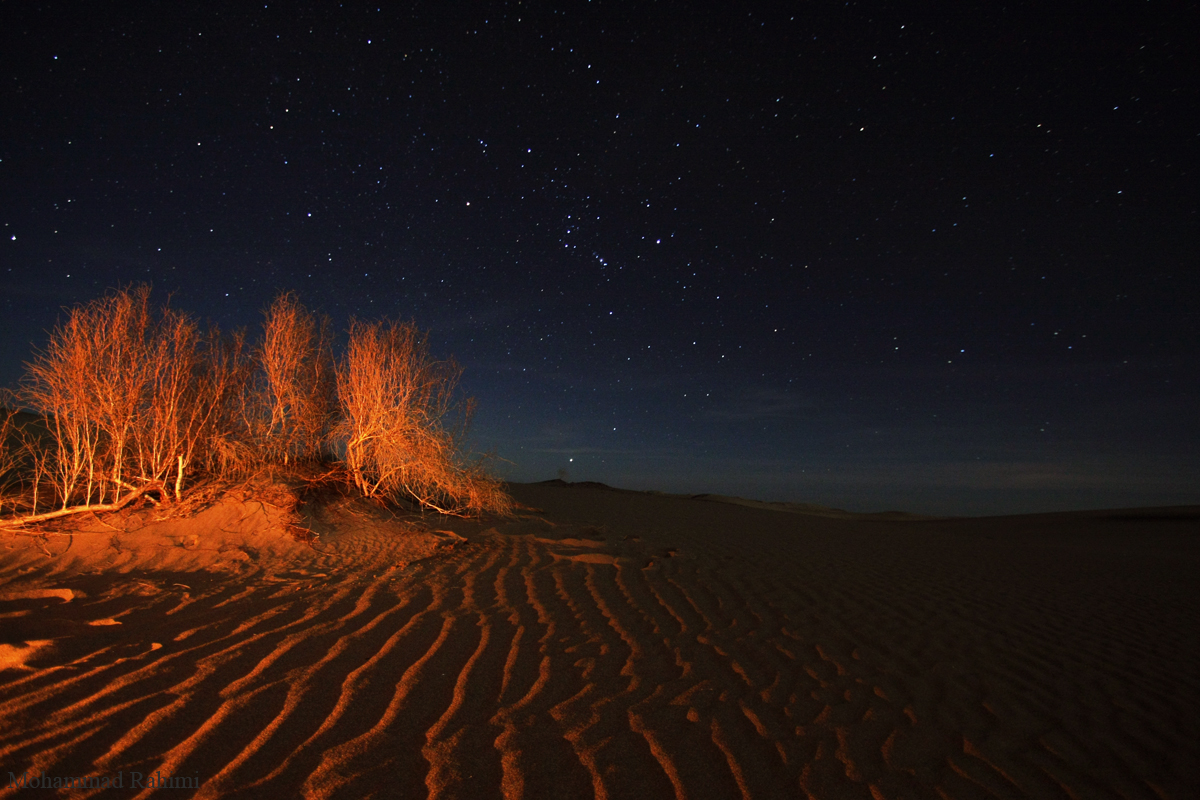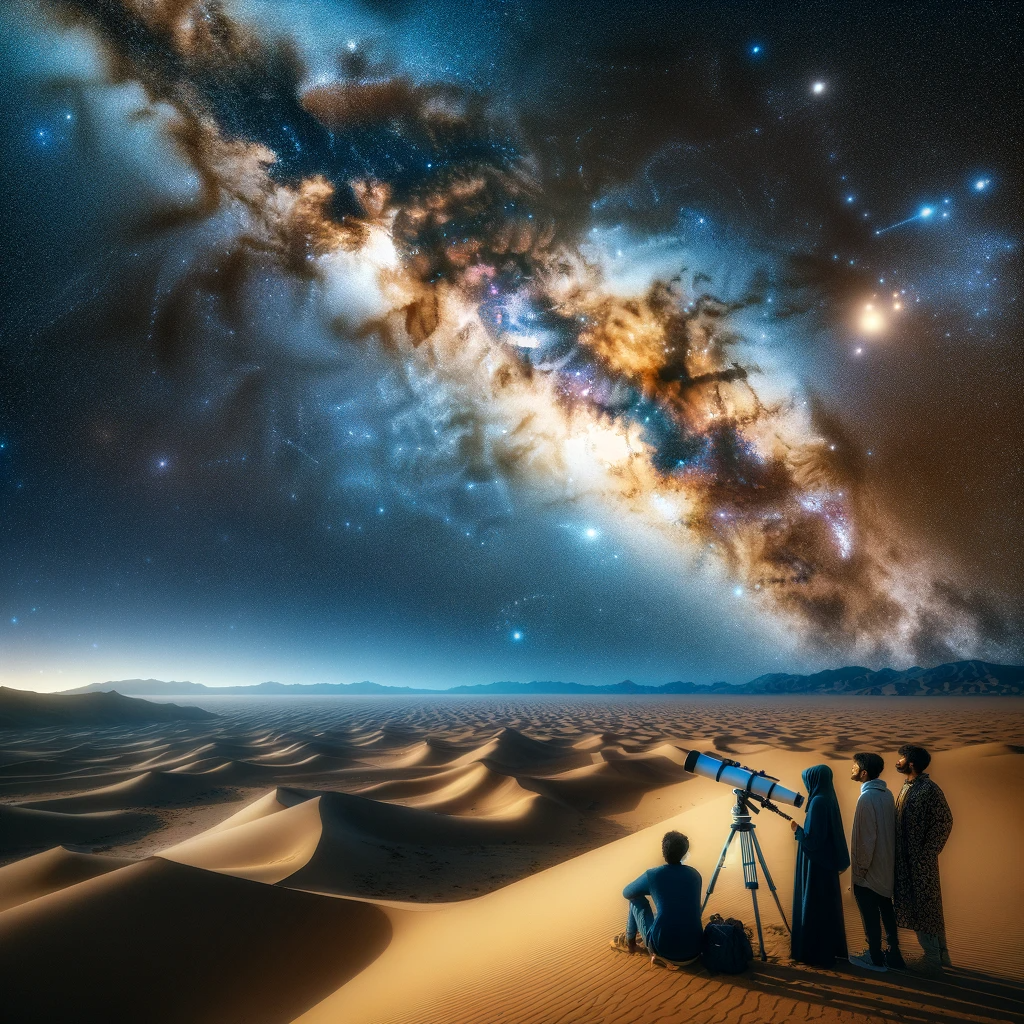Iran, a land steeped in history and culture, rapidly emerges as a premier destination for astronomy tourism. With its vast deserts and towering mountains, the country offers some of the most pristine night skies for stargazing enthusiasts. This article delves into the burgeoning world of astro-tourism in Iran, exploring everything from hidden stargazing spots to the integration of astronomical wonders with Iranian traditions.
Stargazing Destinations of Astronomy Tourism in Iran
Iran’s landscape, a tapestry of natural wonders, is a paradise for stargazers. The country’s geographical diversity, from sprawling deserts to majestic mountain ranges, offers numerous pristine locations for observing the night sky. Accessing these locations and experiencing their unique offerings is an adventure in itself.
Reaching the Deserts for Stargazing
The Dasht-e Kavir, also known as the Great Salt Desert, is a vast expanse of untouched wilderness. To reach this remote location, most visitors start their journey from Tehran, traveling by road towards the city of Kashan, which is a gateway to the desert. From Kashan, local tour operators offer guided tours into the heart of Dasht-e Kavir, where the absence of light pollution allows for an unobstructed view of the cosmos.
The Lut Desert, recognized as a UNESCO World Heritage site, is famed for its surreal landscapes and starry nights. The city of Kerman serves as the primary access point to this desert. From Kerman, travelers can embark on a desert safari that not only includes stargazing but also the exploration of the desert’s unique geological features, like its towering sand dunes and the fascinating Kaluts rock formations.
Venturing into the Mountains
The Alborz and Zagros mountain ranges, stretching across the northern and western parts of Iran, respectively, offer elevated platforms for astronomical observation. To reach the Alborz mountains, visitors often start from Tehran, heading towards popular spots like Mount Damavand, the highest peak in Iran. Local mountaineering clubs often organize trips to these areas, providing both guidance and equipment for a safe and enjoyable stargazing experience.
The Zagros mountains, on the other hand, are best accessed from cities like Shiraz or Isfahan. These regions are not only great for stargazing but also rich in cultural and historical sites, offering a well-rounded travel experience. The cooler climate of the mountains, especially during the summer months, makes them an ideal retreat for both astronomy enthusiasts and nature lovers.
Planning Your Journey
When planning a stargazing trip to these locations, it’s essential to consider the time of year and the lunar calendar. The best stargazing conditions are typically found during the new moon phase when the sky is darkest. Additionally, many local travel agencies in Iran specialize in astro-tourism and can provide tailored itineraries that include transportation, accommodation, and guided tours. These agencies are well-versed in the needs of international travelers and can offer valuable insights into navigating Iran’s diverse landscapes.
Reaching Iran’s prime stargazing locations involves a blend of road travel and guided tours. Whether venturing into the heart of its deserts or ascending its towering mountains, each journey promises not just a celestial spectacle but also an exploration of Iran’s stunning natural beauty and rich cultural backdrop.

Astro-Tourism Activities in Iran
Astro-Tourism Activities: From Night Sky Photography to Star Parties
Astro-tourism in Iran is not limited to mere observation. Enthusiasts can engage in a variety of activities, ranging from night sky photography, where the Milky Way often becomes a stunning subject, to star parties that bring together amateur and professional astronomers. These activities offer a blend of learning and entertainment, making them perfect for individuals, families, and educational groups.
Dark Sky Reserves in Iran: Where Stars Shine the Brightest
Iran boasts several areas designated as Dark Sky Reserves. These reserves are recognized for their exceptionally starry nights and efforts to reduce light pollution. They provide a sanctuary for endangered nocturnal wildlife and a haven for stargazers. The experience of watching the Milky Way in such pristine conditions is nothing short of magical.
Astronomical Heritage: Exploring Ancient Observatories and Sites
Iran’s rich history in astronomy is evident in its ancient observatories and archaeological sites. Places like the Maragheh observatory, which dates back to the 13th century, offer a glimpse into the historical significance of astronomy in Persian culture. These sites are not only important for understanding the history of astronomy but also for appreciating the scientific advancements of ancient Persian scholars.

Tips for a Stellar Experience in Iran
Astro-Tourism Guide: Tips for a Stellar Experience in Iran
For those planning an astro-tourism adventure in Iran, a few tips can enhance the experience. It’s essential to consider the lunar calendar to ensure dark skies and to be equipped with necessary gear like telescopes and star maps. Additionally, respecting local customs and environmental guidelines is crucial for a responsible and enriching visit.
Combining Culture and Cosmos: Astro-Tourism and Iranian Traditions
Astro-tourism in Iran offers a unique opportunity to blend the exploration of the cosmos with the rich tapestry of Iranian culture. Visitors can enjoy traditional Persian cuisine under the stars, or partake in local festivals that often incorporate astronomical themes. This fusion of culture and astronomy not only enriches the travel experience but also highlights the deep connection between the Iranian people and the night sky.
In conclusion, Iran’s burgeoning astro-tourism sector offers a unique and enriching experience for stargazers and culture enthusiasts. From its dark sky reserves to its ancient astronomical sites, Iran invites visitors to embark on a journey that is as culturally rich as it is astronomically enlightening.




No comment